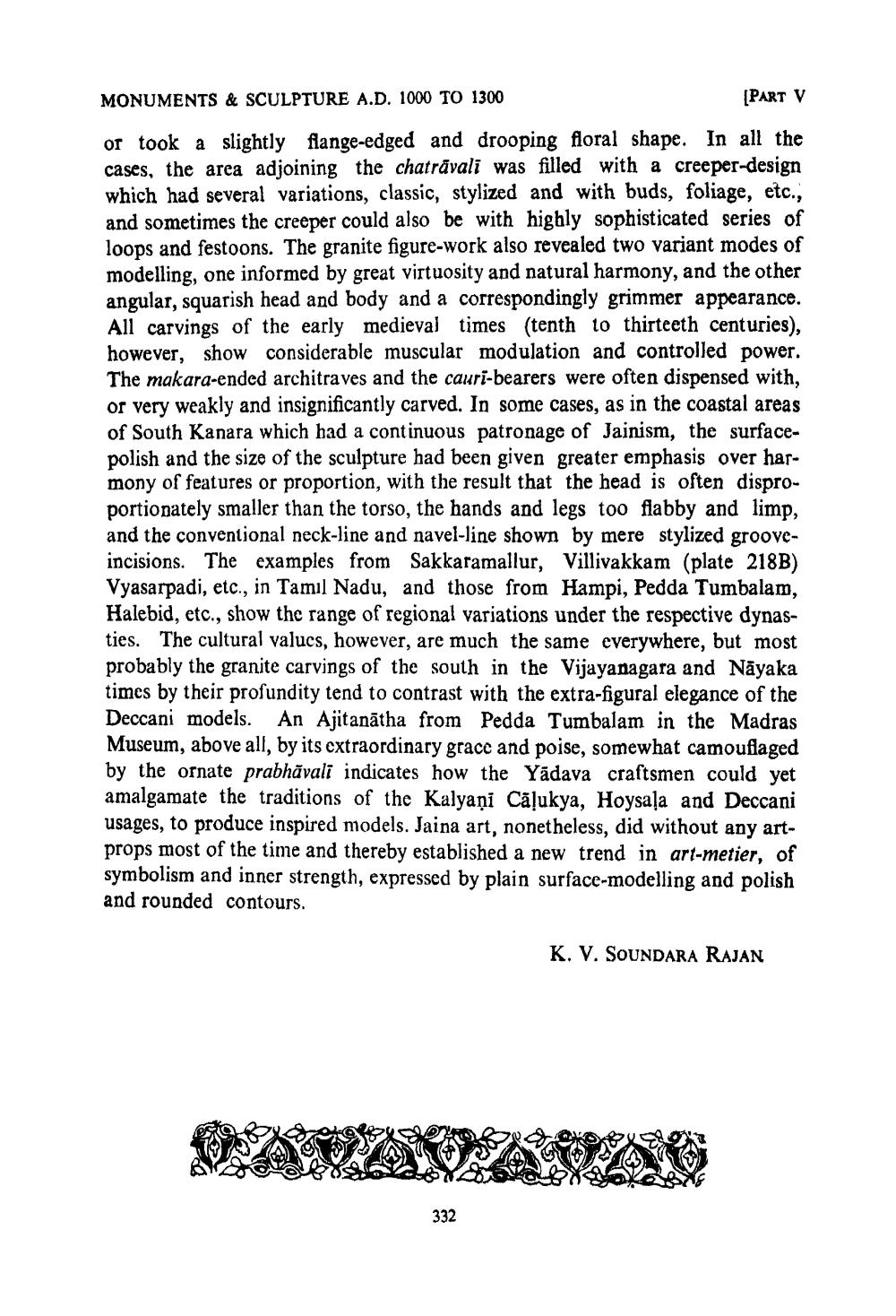________________
MONUMENTS & SCULPTURE A.D. 1000 TO 1300
[PART V
or took a slightly flange-edged and drooping floral shape. In all the cases, the area adjoining the chatrāvali was filled with a creeper-design which had several variations, classic, stylized and with buds, foliage, etc., and sometimes the creeper could also be with highly sophisticated series of loops and festoons. The granite figure-work also revealed two variant modes of modelling, one informed by great virtuosity and natural harmony, and the other angular, squarish head and body and a correspondingly grimmer appearance. All carvings of the early medieval times (tenth to thirteeth centuries), however, show considerable muscular modulation and controlled power. The makara-ended architraves and the cauri-bearers were often dispensed with, or very weakly and insignificantly carved. In some cases, as in the coastal areas of South Kanara which had a continuous patronage of Jainism, the surfacepolish and the size of the sculpture had been given greater emphasis over harmony of features or proportion, with the result that the head is often disproportionately smaller than the torso, the hands and legs too flabby and limp, and the conventional neck-line and navel-line shown by mere stylized grooveincisions. The examples from Sakkaramallur, Villivakkam (plate 218B) Vyasarpadi, etc., in Tamil Nadu, and those from Hampi, Pedda Tumbalam, Halebid, etc., show the range of regional variations under the respective dynasties. The cultural values, however, are much the same everywhere, but most probably the granite carvings of the south in the Vijayanagara and Nāyaka times by their profundity tend to contrast with the extra-figural elegance of the Deccani models. An Ajitanātha from Pedda Tumbalam in the Madras Museum, above all, by its extraordinary grace and poise, somewhat camouflaged by the ornate prabhāvali indicates how the Yādava craftsmen could yet amalgamate the traditions of the Kalyani Călukya, Hoysala and Deccani usages, to produce inspired models. Jaina art, nonetheless, did without any artprops most of the time and thereby established a new trend in art-metier, of symbolism and inner strength, expressed by plain surface-modelling and polish and rounded contours.
K. V. SOUNDARA RAJAN
XOX9X3
New
SA
332




